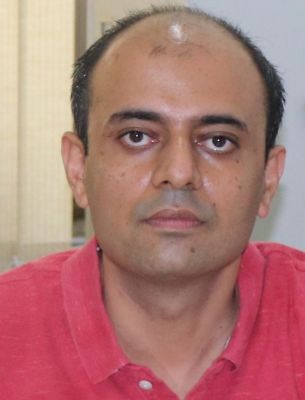Dr. Deepak Chopra – short CV
Professor in the Department of Chemistry at Indian Institute of Science Education and Research (IISER) Bhopal, Madhya Pradesh, India
Dr. Deepak Chopra is currently a Professor in the Department of Chemistry at Indian Institute of Science Education and Research (IISER) Bhopal, Madhya Pradesh. He joined the Institute in 2009. He completed the Integrated PhD program from Indian Institute of Science (IISc), Bangalore in Chemical Crystallography under Prof T. N. Guru Row, in 2006, followed by postdoctoral work in IISc till 2007. He further continued his postdoctoral work at the University of Toledo, Ohio, USA in the field of electron density analysis in molecular crystals under Prof Alan A. Pinkerton from 2007 to 2009. His active research interests, includes investigation of polymorphism in drugs and pharmaceuticals, computational analysis of non-covalent interactions, in situ cryo crystallization, experimental/theoretical electron density analysis and mechanical/electrical properties in molecular crystals. He is currently on the Editorial Board of Journal of Molecular Structure, Elsevier, and the RSC journal CrystEngComm, and a Co-Editor of the journal Acta Crystallographica E (IUCr, Chester).
Lecture 49: Deepak Chopra
The Role of Quantum Crystallography in the Understanding of the Role of Weak Intermolecular Interactions involving Organic Fluorine
Deepak Chopra
Department of Chemistry, Indian Institute of Science Education and Research Bhopal, Bhopal By-Pass Road, Bhauri, Bhopal 462066, India
Email: dchopra@iiserb.ac.in.
The prevalence of non covalent interactions is central to chemistry and biology [1]. Conventional H-bonds are well understood [1] but the role of weak intermolecular interactions, in particular those involving organic fluorine, in the formation of weak H-bonds has been questioned [2]. It was initially envisioned that such weak contacts would evolve only in the absence of strong H-bonds [3]. Detailed investigations, in the past two decades, from high resolution charge density and QTAIM analysis, into the electronic features of fluorine based contacts have established the role of weak C-H…F-C contacts in polymorphs [4]. Furthermore, the importance of C-F…F-C [5] and C-F…O [6-7] contacts in the solid state have also been realized. Interestingly some of these contacts were observed in in situ cryocrystallized liquids [5-6]. It has been observed, that the existence of interactions involving organic fluorine are not a consequence of crystal packing and have implications in the events of molecular recognition in the solid state. Furthermore, the role of fluorine as a halogen bond donor has also been investigated in detail using different computational approaches as well [7]. All these studies explore the applications of quantum crystallography to unravel the importance of weak interactions involving fluorine in crystalline solids.
References:
- (a) Desiraju, G. R. J. Am. Chem. Soc. 2013, 135, 9952 - 9967. (b) Chopra, D., Understanding Intermolecular Interactions in the Solid State: Approaches and Techniques; Royal Society of Chemistry: Cambridge, 2018.
- Dunitz, J. D. ChemBioChem 2004, 5, 614 - 621.
- Thalladi, V. R.; Weiss, H.-C.; Blaser, D.; Boese, R.; Nangia, A.; Desiraju, G. R. J. Am. Chem. Soc. 1998, 120, 8702−8710.
- Panini, P. & Chopra, D. Cryst. Growth. Des. 2014, 14, 3155-3168.
- Mondal, P. K.; Hathwar, V. R.; Chopra, D. J. Fluor. Chem. 2018, 211, 37-51.
- Dey, D.; Bhandary, S.; Sirohiwal, A.; Hathwar, V. R.; Chopra, D., Chem Commun, 2016, 52, 7225 - 7228.
- Sirohiwal, A.; Hathwar, V.; Dey, D.; Regunathan, R.; Chopra, D. Acta Cryst., 2017, B73, 140 - 152.


